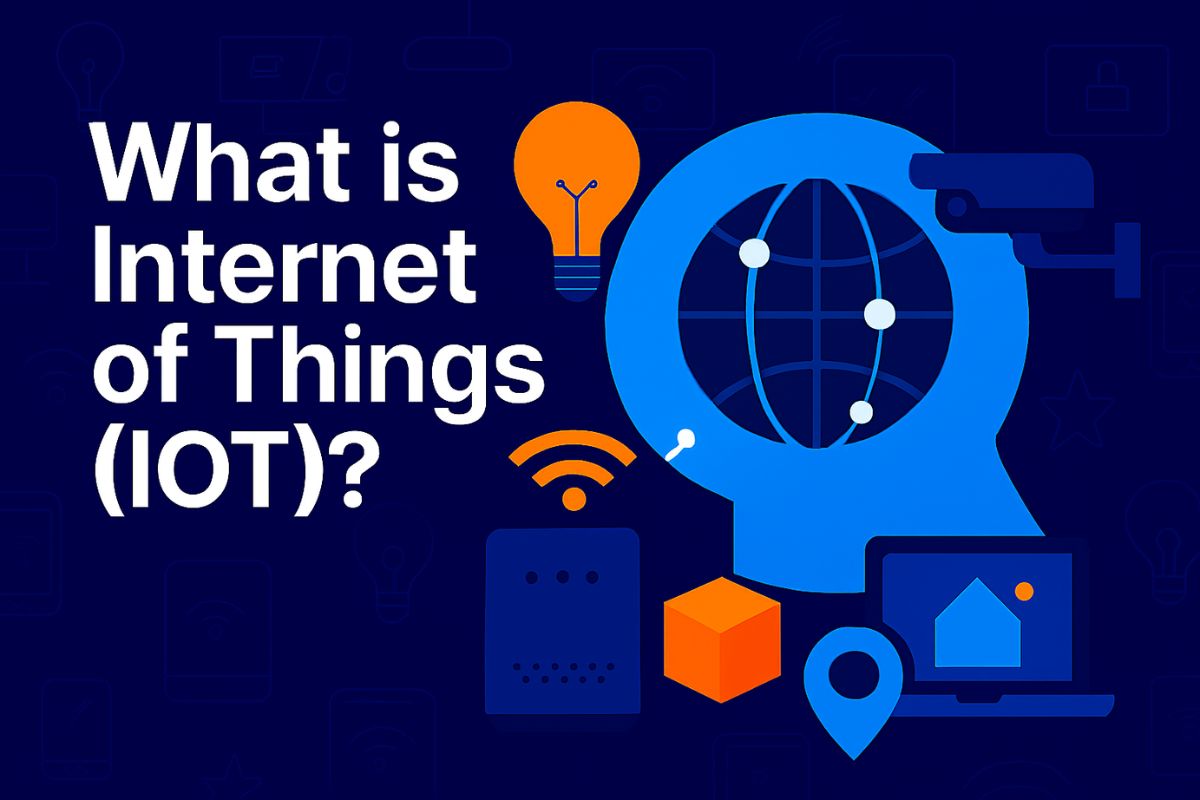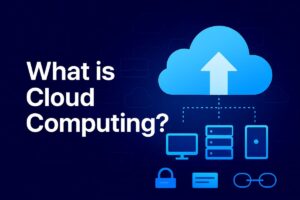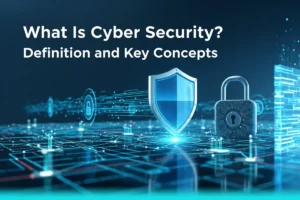The Internet of Things (IoT) connects everyday objects—like appliances, vehicles, and sensors—to the internet, enabling real-time data exchange and automation. This comprehensive guide explains how IoT works, real-world applications in India and globally, key components, benefits, challenges, and career opportunities for 2025.
From smartwatches that track our health to streetlights that turn on automatically—IoT is everywhere.
The Internet of Things (IoT) is transforming how we live, work, and connect with our environment. With billions of connected devices in use, IoT is no longer just a buzzword—it’s the future.
In this guide, we’ll explore what IoT is, how it works, major use cases (including in India), its benefits and limitations, and how you can start a career in IoT.
What is IoT?
The Internet of Things (IoT) refers to a network of physical devices—embedded with sensors, software, and internet connectivity—that can collect and exchange data without human intervention.
These “smart” objects include everything from wearable fitness trackers to industrial machines and connected cars.
How IoT Works
IoT systems consist of five key components:
| Component | Function |
|---|---|
| Sensors | Collect real-time data (e.g., temperature, motion) |
| Connectivity | Transfers data using Wi-Fi, Bluetooth, 5G, LPWAN |
| Edge Devices | Process some data locally (reducing latency) |
| Cloud Servers | Store and analyze massive volumes of data |
| User Interface | Apps or dashboards that display data to users |
Example: A smart AC unit senses room temperature, sends data to the cloud, processes it, and adjusts cooling—all without human input.
Characteristics of IoT
- Connectivity – Enables communication between devices and systems
- Automation – Devices act based on rules without human input
- Scalability – Supports millions of devices
- Real-time Access – Collects and uses data instantly
- Efficiency – Minimizes manual tasks, reducing human error
IoT vs Traditional Devices
| Feature | Traditional Devices | IoT Devices |
|---|---|---|
| Connectivity | Isolated or manual | Internet-connected and integrated |
| Control | Manual | Remote/automated via app or system |
| Data Usage | Minimal or none | Real-time data generation and use |
| Intelligence | No decision-making | Smart, adaptive, and responsive |
Real-World Applications of IoT
Global Examples
- Smart Homes – Thermostats, lights, and voice assistants like Alexa
- Smart Cities – Traffic control, waste management, and public transport
- Industry 4.0 – Predictive maintenance in factories
- Retail – Automated inventory and checkout
- Healthcare – Remote monitoring of patients via wearable devices
🇮🇳 India-Specific Examples
| Application | Description & Indian Context |
|---|---|
| Agriculture | Nano Ganesh: Farmers use mobile to control irrigation remotely |
| Public Sanitation | Indore uses IoT in toilets to track cleanliness in real-time |
| Smart Campus | NITK Surathkal uses IoT for laundry booking and utility monitoring |
| Urban Surveillance | REIT India uses IoT-enabled GPS for city-wide camera surveillance systems |
Major Industries Using IoT
| Industry | Use Case Examples |
|---|---|
| Healthcare | Wearables, smart beds, real-time alerts in ICUs |
| Agriculture | Soil moisture sensors, livestock monitoring, climate forecasting |
| Energy | Smart grids, real-time consumption analytics |
| Transport | Fleet tracking, route optimization, smart parking |
| Retail | Smart shelves, IoT-based demand forecasting |
| Manufacturing | Machine monitoring, remote diagnostics, supply chain visibility |
Benefits of IoT
Key Advantages
- Efficiency – Automates repetitive tasks
- Cost Reduction – Reduces maintenance and energy waste
- Better Insights – Data-driven decision-making
- Safety – Real-time alerts prevent failures or accidents
- Convenience – Smart homes and devices improve user experience
Challenges of IoT
| Challenge | Description |
|---|---|
| Security | Devices vulnerable to hacking if not properly secured |
| Privacy | Personal data may be collected without consent |
| Compatibility | Lack of standardization across devices and protocols |
| Connectivity | Limited access to reliable internet in rural areas |
| Cost | High setup cost for industries and governments |
Economic Impact & Future Trends
- By 2030, over 75 billion IoT devices will be active globally.
- India’s IoT market is expected to exceed $15 billion by 2025.
- Smart cities, digital health, and agriculture will dominate adoption in India.
- Key Indian players: Cavli Wireless, REIT India, IoTech, Watsoo, Hiotron
Career Opportunities in IoT
Top Job Roles
| Role | Description |
|---|---|
| IoT Developer | Builds device software and network architecture |
| Embedded Systems Engineer | Programs microcontrollers and hardware |
| IoT Product Manager | Oversees development and deployment |
| IoT Security Analyst | Focuses on cybersecurity and data protection |
| Data Analyst (IoT) | Interprets data collected from IoT devices |
Salary Insights
| Role | Avg Salary in India | Avg Global Salary |
|---|---|---|
| IoT Developer | ₹6–12 LPA | $80K–120K/year |
| Embedded Engineer | ₹4–10 LPA | $70K–110K/year |
| Product Manager (IoT) | ₹10–20 LPA | $100K–150K/year |
| IoT Analyst | ₹5–9 LPA | $75K–120K/year |
How to Start Learning IoT
Beginner Roadmap
- Understand the basics: Sensors, connectivity, microcontrollers
- Learn Programming: Python, C++, Arduino IDE
- Use Tools: Raspberry Pi, Arduino, ESP32, NodeMCU
- Join Courses: Coursera, NPTEL, upGrad, AWS IoT
- Build Projects:
- Smart light controller
- Soil moisture detector
- Motion-activated alarm
- Join Communities: GitHub, Reddit, Stack Overflow, IoT India
Misconceptions About IoT
- ❌ IoT = Home gadgets only
➤ IoT spans healthcare, farming, manufacturing, and beyond - ❌ Only tech people can use IoT
➤ Plug-and-play IoT tools make it easy for everyone - ❌ IoT is not relevant in India
➤ India is one of the fastest-growing IoT markets
FAQs
1. What is IoT in simple words?
IoT is a network of smart devices that connect to the internet to send and receive data automatically.
2. Is IoT used in India?
Yes, IoT is used in agriculture, sanitation, traffic systems, education campuses, and smart cities across India.
3. Do I need coding skills for IoT?
Basic coding in Python or C++ is helpful, especially for development and hardware interaction.
4. What devices are considered part of IoT?
Examples include fitness bands, smart ACs, traffic sensors, irrigation controllers, and industrial monitors.
5. What are the risks of IoT?
The biggest concerns are security, data privacy, and device compatibility.
6. How can students learn IoT for free?
Free courses are available on NPTEL (IITs), YouTube, and Coursera. You can also use low-cost kits to build your own projects.



